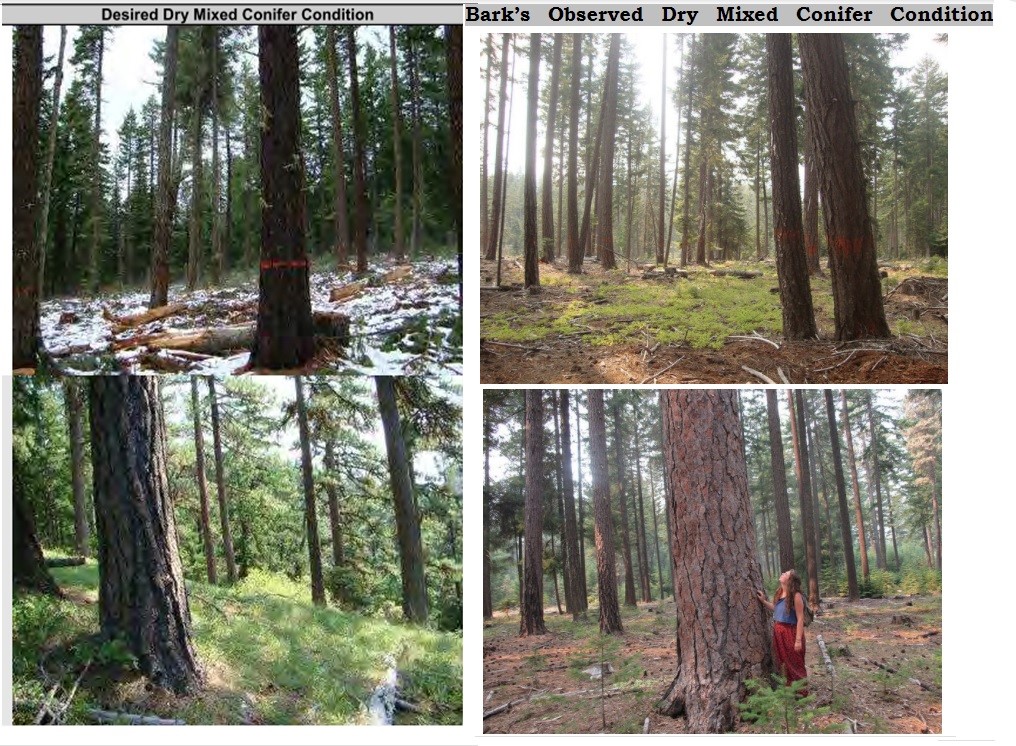Groundtruthers are the First Line of Defense

My first day volunteering with Bark we met with the District Ranger to discuss a pocket of old growth forest that had been erroneously included in a cutting unit of the proposed Wildcat Timber Sale project. When we looked at the area, the ranger admitted it was undeniably inconsistent with the project’s “purpose and need” and it was immediately dropped from the sale. This direct impact demonstrated the importance of Bark’s work to me and the critical value of getting out on the ground to check on the Forest Service’s assertions.
Support Bark’s work this Giving Tuesday!
Since 1999, Bark has trained hundreds of groundtruthers to walk proposed logging projects to take meticulous documentation which is then used in Bark’s outreach, advocacy, and policy work. While every project that we survey is different, I am proud to say that since that day in Wildcat, this activity has contributed to thousands of acres of forest around Mt. Hood being freed from logging.

This year, groundtruthers focused their time walking proposed units of the Grasshopper Timber Sale on the east side of Mt. Hood, as well as stands of trees within the “Pocket” project area, which steep slopes face down toward Highway 35, south of Hood River and near Lookout Mountain. Both projects contained cool, moist old growth forest which has been slated for “fuels reduction”. Wildfire’s role in these environments is nuanced and complex, but already Bark has been able to bring important information to the agency to consider in their decision-making processes.
Some sections of the Grasshopper project are within Late Successional Reserves, a designation meant to protect and promote old growth forest. However, as Bark demonstrated that several of these stands already contain high quality old growth habitat, the agency has decided to exclude many of them from their proposed action. While this is a step in the right direction, we are staying vigilant of future public comment opportunities for this project, when we will bring additional groundtruthing information to the table and alert our members of any new developments.
The days spent in the Pocket project area revealed that much of the area is old, high elevation forest with very little existing road access for timber operations. Volunteers noted species like white bark pine, a tree threatened by climate change, and cold unmapped streams in sections of forest identified by the agency for potential logging. While the agency has not released any official proposal for this project yet, we are happy to say that we believe to have covered most of the project area already and will have lots to share when they do!
During the past year, Bark has been coordinating with other groups who are doing this work in neighboring forests. Through the Pacific Northwest Forest Climate Alliance, we are beginning to form a network of volunteer field surveyors with shared resources and know-how to respond to proposals as they come. If you are interested in this work but don’t live in the Portland area, check out Blue Mountains Biodiversity Project, Cascadia Wildlands, Williams Community Forest Project, Great Old Broads for Wilderness, or Center for Responsible Forestry.
Groundtruthing is also personal action to take. Through explorations off-trail, I have learned much about the forest but also about myself, and my relationships to others and the land.
Please consider joining us in this work or making a donation to support our efforts.
Looking forward to another year in the forest,
Michael Krochta, Forest Watch Coordinator
P.S. As I hinted above, groundtruthing can bring up more questions than answers. Like, how did extractive dominance over the land come to be? Join me at the upcoming People’s Forest Forum: Unsettling Ecologies of Mt. Hood on December 9th to find out more.